#pat patterson
Text

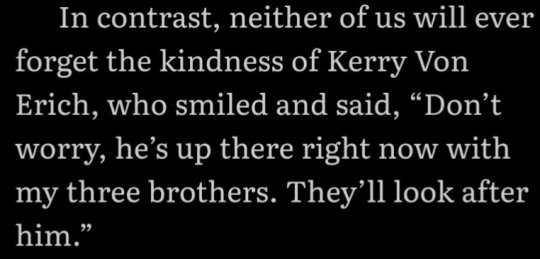
Brett Hart Remembers Kerry Von Erich
#Bret Hart#Kerry Von Erich#Vince McMahon#Pat Patterson#Von Erich#The Iron Claw#WWE#AEW#All Elite Wrestling#ROH#Ring of Honor#AEW Dynamite#AEW Rampage#AEW Collision#Iron Claw
458 notes
·
View notes
Text

Pat Patterson
#vintage#beauty#smoking#smoking cigarette#sexy smoking#cigarette#sexy smoker#actress#hollywood#pat patterson
17 notes
·
View notes
Text
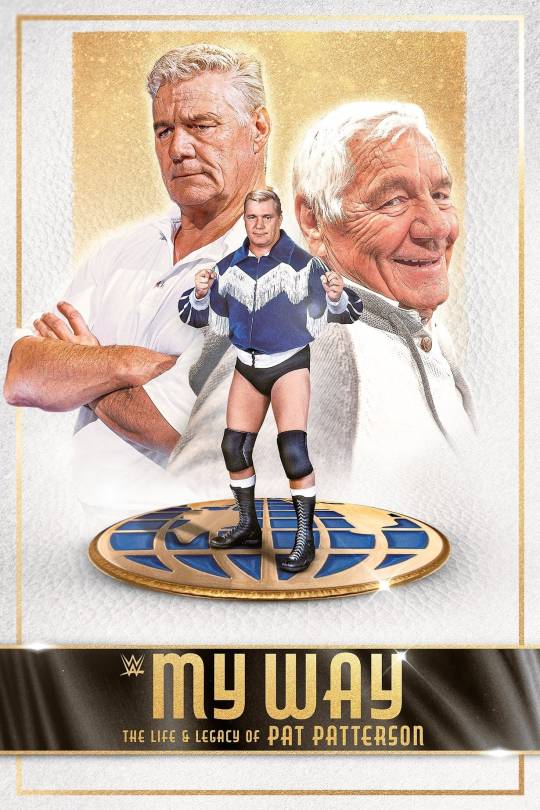
W A T C H I N G 🏳️🌈
"MY WAY: The Life and Legacy of Pat Patterson"
He was a semi-openly gay man within professional wrestling. Publicly, he was secretive about his sexuality. He had a poor, sad, lonely upbringing until he was more successful his father accepted him more. But he didn't have much support from his family when he came out to them as a teenager in the late 50s. Had to leave home at 16.
He's been the subject of rumors and erroneous stories because of homophobia in wrestling and in society.
He was a talent and a genius for wrestling and helped so many wrestlers over 45-50 years throughout the 80s, 90s, 2000s, and 2010s all the way until his death in 2020. He was like 'required reading' for anyone dreaming to wrestle, he put on shows and matches that today are still unbelievable.
I think he's a good man. He's a hero.
#PAT PATTERSON#WWF#WWE#PRO WRESTLING#Pierre Clermont#World Wrestling Federation#World Wrestling Entertainment#gay#LGBTQ#watching#intercontinental champion#professional wrestling#history#Big Time Wrestling#Pacific Northwest Wrestling#Championship Wrestling from Florida#American Wrestling Association#New Japan Pro-Wrestling#AWA wrestling#heroes#🏳️🌈#dwayne johnson#hulk hogan#steve austin#roman reigns#john cena#gene okerlund#Jerry Brisco#hillbilly jim#vince mcmahon
14 notes
·
View notes
Text
Abuse of women in the wrestling industry
In light of the situation with the Vince lawsuit I want to share a great article on issues in wrestling relating to misogyny, which touch upon allegations aswell as the neutral up to positive attitude some wrestlers and workers have around sexual assault and blatant disrespect of consent ( upholding r*pe culture, even by more modern wrestler ), aswell as misogyny and abuse of women : https://www.fanbyte.com/legacy/a-brief-history-of-creeps-in-professional-wrestling
I think it's important to remember what many men, with the help of other men or women, did in this business, to women and even children.
It's also extremely important to remember the women who were brave enough to talk about the abuse, and fight it. Women in this industry like in many entertainement business, from wrestling to fashion or even animation are used and abused by men on a, well, industrial level.
We have to be conscious we are watching a media built by those men, who have those ideas, and be critical of it.
It can be small like a wrestler wearing an Art Barr tshirt on TV
Or it may be big, watching the royal rumble, and hearing the name of it's creator, we have to remember the ring boys and Pat's misogynistic storylines and jokes he infused into the program.
Same can be said about Vince and the attitude and more modern era. How many women abused behind the scene, kept as eyecandy or not used for their wrestling abilities, simply because they are women.
When you are looking at a woman being humiliated in a fetish way on this show for a " storyline " ( you are looking at a women being abused, even if it's for a story ) it's because someone enjoy that power and dominance, and he feel so free about it he show it in front of you. If I say "women pro wrestling" to a woman my age in my country, they think misogynistic fetish fest !
Another point that bother me is the use an toss aspect given toward women in the business and sadly make it even more sad when women are helping men to shine, only for them to be awful men and make their legacy hidden. What would be Ric Flair without an Olivia Swithen Walker robe ?
To speak on use and abuse, I can only think of the so many female relegated to valet and manager ( as in classic celebrity manager ).
Behind Chris Benoit there was Nancy Toffoloni , who also helped tremendously Vickie Guerrero after the lose of her husband. She was horrendously killed by him.
Managing Snuka behind the scene was Nancy Argentino, who was killed by him.
How many wrestler's wife were and are holding together the household just to be beaten by their husband ? Too many
I also want to highlight the more insidious exploitation of women's ressources through unpaid labour, their body and money. ( and being educated to be kind, patient and caring help in it )
Take that awful interview of CM punk and Colt Cabana in 2005. Yes Punk is a good wrestler and speaker, did he exploit and abuse the shit out of some women for his benefice and treat her like scum ? Yes, and look at where he is now. He can wear as many "abortion is a human right " shirt as he want, because he sure did not see the humanity in the girl he used.
I'm sure this whole trial situation may bring strong emotions to people who were abused in such ways, and awarness by others of your situation is very important, even if it's simply a sibbling or close friends. The more people know it happen, and it happen often sadly, the more people will realise it's a common reality.
On a bit of positivity to end this I want to make clear the solution is not to give up wrestling, give up all entertainement and live in a cave. They actually want you to do that ! The solution is more women in charge in those industry, Shareholders, managers, creative team, places of power... Women and girl are around 50% of the world ? We got to take our sit at the table. As a viewer, we also have to "vote" with our time and money. Be vocal online about turning off the tv when an abusive wrestler you don't like is onscreen, make jokes about it even ! PR is power in our era.
Girlies, don't fall off the wagon, they want you to !
peace, Puss in Buss.
#if I messes up some of the censor or trigger tags please tell me#tw sa#tw misogyny#tw rape#tw rape culture#may delete it#If it come across weird I'm sorry I'm not the best at explaining myself#wwe#ric flair#cm punk#tw murder#tw child death#tw dv#vince mcmahon#pat patterson#huge rant#tw child abuse#there is so much more
14 notes
·
View notes
Text
I have some other thoughts on cody rhodes tbh, and those delve deep into capitalism, hopefully without sounding like i'm utterly huffing farts, excuse me if i do, but i dont like cody rhodes because he comes off to me as everything thats wrong with modern day society, he is not the blue collar workings man champion, he isn't stone cold going against the authority, he is the authority, but people today absolutely love that shit, they love standing up for big corpo when they think it's on their side, he's the definition of american capitialism coming out there with the fake blonde hair, expensive suits, white teeth, all the pyro, everything, and he reflects how people just want to show off to the world that they're cool/wealthy/epic, with all the people showing their perfect life in instagram and how perfect they look instead of showing who they really are, cody rhodes is the modern day american dream in that everyone thinks that within american capitalism they can become the next famous instagram or tiktoker and have all this money, but they can't, cody rhodes is born into wrestling and was always going to get an easier life in wrestling because of it, cody rhodes has never ever had to struggle a day in his life, but people just still like the guy because they've been fooled into believing that, what does he do at the end of wrestlemania, he thanks triple h and bruce prichard, thank you corporate heads for giving me this chance, he has to make sure he thinks those two people because thank you for corporations!
meanwhile wwe is in the midst of being exposed as hiding all these sex trafficking secrets for years, vince mcmahon has been "ousted" after years of sexual assault and misconduct but not because of that, only because he used corporate money to silence those women, they dont care they he sexually assaulted countless women, it's because he used money not for him, and theres countless cases of wwe covering up shit whether it be the ring boy paedo scandal of the 80s with pat patterson or michael hayes saying that he's more of a n word with a hard r to mark henry only to now days being back at the tippity top of the producer scene working exclusively with roman reigns in all of his matches, these people just get away with it all because it's a reflection of society, if you're rich and powerful you can do whatever you want.
#wwe#wrestlemania 40#cody rhodes#roman reigns#vince mcmahon#michael hayes#pat patterson#triple h#bruce prichard#tw sex assault#tw molestation
9 notes
·
View notes
Text
Dark Side Of The Ring season 5 wishlist
My ideas for what I wanna see in season 5
Gentleman Chris Adams
The Ringboy Scandal
Bill DeMott
The Knight Family
Wrestlers Court
Terry Gordy
Hazing
The Divas Search
Ashley Massaro
Rikidozan
Buck Zumhofe
Hardbody Harrison
Heroes Of Wrestling
Adrian Street
The Kliq
Perry Saturn
IWA Mid South
Muhammad Hassan
#Dark Side Of The Ring#Dark Side Of The Ring Season 5#Gentleman Chris Adams#Pat Patterson#Mel Phillips#Tom Cole#Terry Garvin#Bill DeMott#Saraya Knight#Ricky Knight#Terry Gordy#Ashley Massaro#Rikidozan#Buck Zumhofe#Hardbody Harrison#Heroes Of Wrestling#Adrian Street#Scott Hall#Kevin Nash#Shawn Michaels#Triple H#Perry Saturn#Muhammad Hassan
9 notes
·
View notes
Text
Happy birthday Pat!!!! We miss you!!!
3 notes
·
View notes
Text
Wrestlemania Main Event Reviews - Wrestlemania XI
Lawrence Taylor def. Bam Bam Bigelow with special guest referee Pat Patterson in 11:42
Bam Bam Bigelow looking menacing ahead of this one! Taylor’s out and has a cool light show on the mat with the number 56! I assume this was his American football number. The ring is surrounded by the likes of Kama Mustafa and King Kong Bundy as well as LT’s team of buddies. Do I spot Mongo??? Stare Off to start and Bigelow shoves Taylor. LT with the slap, brutal clothesline and a knee, then sends Bigelow over the top with another clothesline. Great start for him! LT dodges a corner splash, bulldog and some forearms. Big hip toss and Bigelow escapes to the outside. LT jumps out and the NFL and Million Dollar Corporation get in each other’s faces. Bigelow and LT head back inside and Bigelow gets the upper hand. Powerslam but falling headbutt dodged. Big strike and leaping strike that Bigelow reverses into the corner. LT kicks from the corner but Bigelow plants him again. LT at the feet of Bam Bam and his mercy. Boston crab locked in. LT claws for the rope, dragged back for a single leg, but gets to the rope. Bigelow stays in control, and the single leg boston crab spot happens again. LT eventually busts out a big teardrop suplex but Bigelow hits some dropping headbutts. Bam Bam Sault but he hurts his knee on the way down and is slow to cover. Kick out and LT pulls himself up. Sent into the ropes, but LT reverses with an awkward gutwrench suplex. Bigelow kicks out and then hits a big spinning kick. More headbutts and he wants to head up top but starts mouthing off with the NFL team. Hits a diving headbutt but LT kicks out. LT gets up and attacks in the corner. Big running forearms that look impactful and another off the middle rope for the 1-2-3! LT wins! LT is completely spent as his team lift him up as Ted DiBiase yells to Jim Ross up the ramp.
Pros: LT was impressive for a non-wrestler, Bam Bam also had good action
Cons: No real place as a Wrestlemania main event, Bam Bam looks kinda weak, low stakes
This match is an odd main event and has no real stakes but they did a good job and it certainly over delivered! LT gave it his all and Bam Bam led the match well. Actually ended up being an improvement on recent years! Good job to them! Still nothing wild as a straight-up match though.
2.5 STARS OUT OF 5
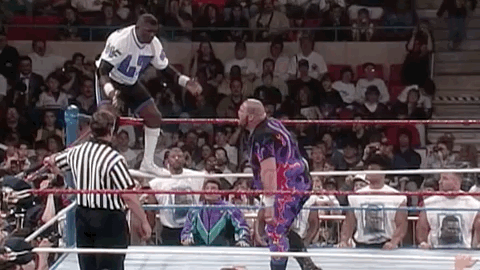
#wrestlemania main event reviews#wrestlemania 11#wrestlemania#wwe#wrestling#pro wrestling#bam bam bigelow#lawrence taylor#pat patterson
2 notes
·
View notes
Text
In Transition: Bridging the Gap to Hulkamania
In Transition: Bridging the Gap to Hulkamania
Brian Damage
The launch of Hulk Hogan as WWF champion and the subsequent birth of ‘Hulkamania,’ was really the starting point for the World Wrestling Federation’s growth from localized territory to national expansion in the early to mid 1980’s. Before Hogan became champion, there needed to be a bridge created to have him be the conquering hero. For years, babyface Bob Backlund was the face of…
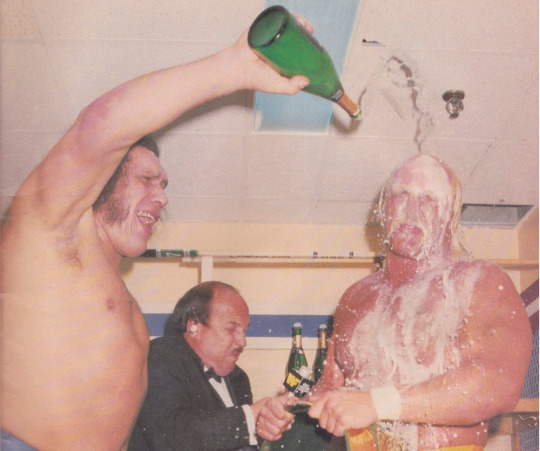
View On WordPress
#Hulk Hogan defeats the Iron Sheik#Hulkamania#Pat Patterson#Sgt Slaughter#The Iron Sheik#The Magnificent Don Muraco#The Masked Superstar#Vince McMahon#Vince McMahon Sr#WWE#WWF
2 notes
·
View notes
Text

4 notes
·
View notes
Text
The more time passes, the more I think Pat Patterson was the only North American in the modern era that could put together great finishes.
#Pat Patterson#WWF#WWE#World Wrestling Federation#World Wrestling Entertainment#Wrestling#WWF Text#WWE Text#Wrestling Text#Text#AVText#AVWWF#AVWrestling#AVWWE#AVWrestlingText#AVWWEText#AVWWFText#AVThoughts
1 note
·
View note
Text

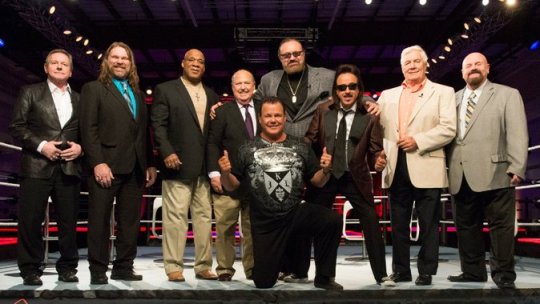
W A T C H I N G
#WWE LEGENDS HOUSE (2014)#Mean Gene Okerlund#Hacksaw Jim Duggan#Hillbilly Jim#Howard Finkel#Jimmy Hart#Roddy Piper#Pat Patterson#Tony Atlas#WWE#Ashley Roberts#WWE Network#World Wrestling Entertainment#WWF#WORLD WRESTLING FEDERATION#WRESTLEMANIA#Rowdy Roddy Piper#Gary Busey#Shawn Michaels#Jerry The King Lawler#IRON SHEIK#Khosrow Vaziri#REALITY TV SHOW#WWF LEGENDS#Jerry Lawler#Rhett and Link
2 notes
·
View notes
Text
Most Beloved WWE Wrestler Tournament

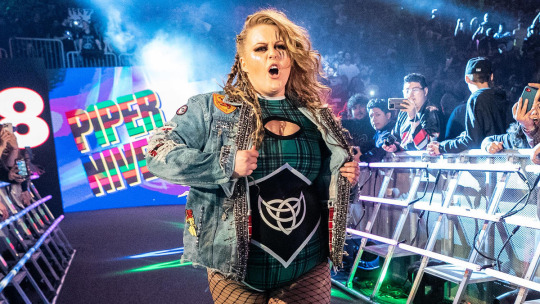
0 notes
Text
Pat Patterson vs Ted DiBiase - 1979
youtube
0 notes
Text
'Lilli Schwenk Hornig was 23 years old when she arrived at Los Alamos to contribute to the development of an atomic bomb that would end World War II. A passionate chemist, Lilli battled sexism throughout her academic and professional careers and remained a steadfast advocate for female scientists like herself.
Lilli Hornig: What I remember in my mind is the—these sort of boiling clouds and color—vivid colors like violet, purple, orange, yellow, red, just everything. And we were all kind of shaken up.
Katie Hafner: That’s the scientist Lilli Hornig, describing what she recalls of the first test of a nuclear bomb on 16 July 1945 in the New Mexico desert.
This is Lost Women of the Manhattan Project, a special series of Lost Women of Science focusing on the female scientists and their contributions to the building of the first atomic bomb.
In this episode, we share the story of a young chemist who experienced Nazism firsthand in Europe before finding herself in the middle of the United States’ war against Hitler, working against time to develop the detonating device that would make the Trinity test possible. After that test, and the bombs themselves that were dropped on Japan, she was shaken, and haunted.
We also want to tell you Lilli Hornig’s story because she's an example of something we keep seeing over and over at Lost Women of Science: female scientists who follow their scientist husbands to new jobs in academe or industry. The Manhattan Project scooped up many of these spouses though it’s impossible to put a number on just how many.
And there’s more about Lilli Hornig: she’s the only female scientist named in Oppenheimer, Christopher Nolan’s blockbuster film. Her cameo appearance isn’t far off the mark. She’s shown as a woman determined to work as a chemist, not a secretary.
In 2011, the year she turned 90, the real Lilli Hornig sat down for an oral history interview with the Atomic Heritage Foundation. The audio you’ll hear from that conversation is a little bit scratchy, and although Hornig is still as sharp as can be, it’s clear that she’s, well, 90.
Producer Mackenzie Tatananni brings us Lilli Hornig’s story.
Mackenzie Tatananni: Lilli Schwenk was born on March 22, 1921, to Jewish parents in a tiny Czech town about 50 miles outside of Prague. Her father was an organic chemist, her mother a pediatrician. Lilli was introduced to science during her formative years, and the interest stuck.
Hornig: My father took me occasionally, very occasionally, on a Sunday to his lab, and I just loved all the glassware, and he gave me some micro-sized glassware for my doll house. So, I always assumed I would be either a chemist or a physician. And I was kind of squeamish at the time, so I went for chemistry.
Tatananni: In 1929, when Lilli was eight years old, she moved with her family to Berlin, where her father began work for a pharmaceutical company. But anti-semitism was on the rise and the Nazis were establishing a stronghold throughout Germany. The danger to the Schwenk family was palpable.
Hornig: After Hitler came to power, my father was actually being threatened with being taken off to a concentration camp.
Tatananni: Fearing for his life, her father fled alone to the United States in 1933. It would be months before Lilli and her mother were able to join him, settling in Montclair, New Jersey.
The U.S. was a daunting new world for Lilli. She barely spoke English. School was the biggest shock of all. Everything was unfamiliar, from the placement tests she took at the start to the creamed carrots she prepared in cooking class.
But she wasn’t deterred. Lilli earned a B.A. in chemistry from Bryn Mawr in 1942 before moving on to a graduate chemistry program at Harvard. Unlike Bryn Mawr, a women’s college, Harvard’s chemistry department was far from inviting for women. For one thing, there was no ladies’ room in the building.
Hornig: I had to go to another building. I had to get a key for it. And that sort of gave me a message.
Tatananni: At a meeting with chemistry faculty, she was told that women always had trouble with physical chemistry. Lilli did NOT want to prove them right. She studied rigorously, poring over the notes of fellow chemist Donald Hornig, a PhD student whom she’d met on her first day and soon began dating. But she flunked the first semester and was forced to retake it, only to ace it the second time around.
In spite of these trials, she earned her master's in chemistry in 1943, the same year she married Don Hornig. Don was already involved in the effort to develop nuclear weapons. His doctoral thesis investigated blast measurement, and he was studying ways to measure blasts in midair.
In 1944, Don was approached by his thesis advisor, Bright Wilson, with a job offer. But he wouldn’t elaborate on just what the job would be.
Hornig: Bright said, “Well I can’t tell you much about it.”
And Don said, “Well tell me where it is.”
And he said, “No I can’t tell you.”
“Well, can you at least tell me, is it north, south, west?”
“No, couldn’t tell you.”
Tatananni: Don relayed what little information he had to Lilli. The job offer was shrouded in so much mystery that they jointly decided that Don would turn it down. However, Don continued to face pressure, particularly from George Kistiakowsky, a physical chemist who had gone to Los Alamos to develop explosives. Kistiakowsky called Don and told him he needed him badly.
Hornig: And with a few curses, which was very much his style—he said, “Dammit, you come out here.”
Tatananni: Kistiakowsky managed to talk Don into taking the job. But–
Hornig: I said, “What am I going to do there?”
And so Don talked to George some more, and after that George said, “Oh we’re scouring the country for anybody with a Master’s in chemistry, especially from Harvard, is going to be more than welcome.”
Tatananni: She was in. They were both 23.
Hornig: You know we were so young. When I look now at our grandchildren, the youngest ones are about the age we were then and they don’t think of themselves as having adult responsibilities. It’s very striking to me because we had no doubt that we were grown up.
That spring, the couple sold their Massachusetts home and their sailboat, bought a 1937 Ford Coupe and drove to Los Alamos, New Mexico.
When they arrived…Don went straight to work…
Hornig: And I went to the personnel office. And the first question was, “How fast can you type?” And I said, “I don’t type.”
Tatananni: We see a version of this scene in the film Oppenheimer. The character Lilli Hornig catches up with Oppenheimer as he’s walking with a group of men.
[Start clip from the film Oppenheimer]
Hornig: Dr. Oppenheimer, I tried personnel. They asked if I could type.
J. Robert Oppenheimer: Can you?
Hornig: Harvard forgot to teach that on the graduate chemistry course.
[End clip from the film Oppenheimer]
Tatananni: Oppenheimer turns to one of his scientists and says, "Put Mrs. Hornig on the plutonium team.
She started with the plutonium group as soon as her security clearance came through, and she quickly found that her new life was…lonely.
Ellen McGehee: She did not have children. She was even more isolated from her, sort of female peers, because she kind of worked within her own group and socialized with her husband's friends and those couples.
Tatananni: That’s Ellen McGehee, a lab historian at the Los Alamos National Laboratory who has researched the life of Lilli Hornig.
McGehee: I sense that she had almost a, she had a pretty compartmentalized scientific experience. Even though she knew what the goal was.
Tatananni: Here’s how Lilli saw it:
Hornig: There was one other woman in the division, she and I worked together, and we had our little cubby hole and did our little procedures and put them under the geiger counter. And nobody actually really spoke to us.
Tatananni: Plutonium chemistry was a mystery at the time, as almost none of the artificial element had been created. Lilli’s group was working on studying plutonium-239, the isotope that was believed to be a powerful fuel for the atomic bomb. However, in the summer of 1944, there was a disappointing discovery. It turned out that using plutonium in a bomb would be harder than expected. Los Alamos scientists found that plutonium created in a nuclear reactor contained traces of the isotope plutonium-240, which is formed when plutonium-239 absorbs another neutron while still inside the reactor. Plutonium-240 had an extremely high rate of spontaneous fission, and could not be removed from the valuable plutonium-239. While uranium could be used in a very simple bomb design, a plutonium bomb made that way would prematurely detonate, destroying itself before its reaction got large-enough to be a viable weapon.
So the Los Alamos scientists had to pivot. And quickly.
At that time, most of the work at Los Alamos had been focused on a simple bomb design called the gun-type, in which one piece of fissile material was shot into another through a gun tube. The plutonium gun design, called Thin Man, was discontinued when it was discovered that it would pre-detonate. The scientists understood that to use plutonium in an atomic bomb, they would need to do something different.
They decided to focus on implosion, a much faster method of assembly. A sphere of plutonium would be surrounded by tons of specially-designed high explosives, detonated at exactly the same moment and potentially leading to a powerful and efficient explosion. But nothing like implosion had ever been done before. The entire organization of Los Alamos was shifted in the summer of 1944 to tackle and solve the implosion problem.
When that happened, both Lilli and the other woman were taken off work that directly involved plutonium. The men in charge were concerned that radioactive materials would affect fertility. This scene also appears in the Oppenheimer movie, but don’t blink or you’ll miss it. In case you did miss it, here’s how Lilli described her reaction to the men's concern for her health:
Hornig: They were worried obviously about reproductive damage. I tried delicately to point out that they might be more susceptible than I was; that didn’t go over well.
Tatananni: Lilli went on to join her husband in the high explosives unit. The need for precision in the explosives and their detonators was unprecedented, and that unit proved crucial to the success of the new plutonium bomb, which was codenamed Fat Man.
Here's Ellen McGehee, the Los Alamos historian, again:
McGehee: They really needed to figure out how implosion was working. And so they had to come up with all these different methods and new technologies that had to be invented on the spot and facilities that actually had to be built.
Tatananni: Lilli’s group worked on the explosive lenses used in Fat Man to focus the implosion shockwave and guarantee that pressure was uniform around the plutonium core. But just two days before the Trinity test, there was a misfire on the spark gap switch, a sensitive electronic device that Don had designed to send an electrical signal to all 32 of the lens detonators within a microsecond.
Hornig: And at two o’clock in the morning our group leader Lewis Fussell was knocking on my bedroom window saying, “You have to get up, we have some work to do.”
Tatananni: So Hornig and Fussell headed to the stock room with a list of equipment they had to replace. In a matter of hours, they located the parts, which were shipped off on a truck that same morning.
Forty eight hours later, Lilli was sitting atop a mountain in the Sandia range with colleagues, 110 miles from the test site, watching and waiting for ignition.
Hornig: We put sleeping bags on the ground. None of us slept very well, so we got up about three o'clock, I guess. And started waiting for the shock, kept keeping our eyes glued on, on the site.
Tatananni: They waited and waited, but nothing happened. They decided the test wasn't happening that day after all, and started to leave.
Hornig: I was sitting in the car reaching for my ignition key—and the thing bloomed in front of us and it was just incredible.
Tatananni: It didn’t take long for Lilli and her colleagues to understand in the most concrete of terms the potential for destruction on an unprecedented scale.
Germany had surrendered two months earlier, in May of 1945, so the war in Europe was over, but it raged on in the Pacific as Japan refused to surrender.
Lilli – and many others working on the Manhattan Project – had been in favor of building a bomb to stop the Nazis, especially if the Germans were working on one as well. But once Germany surrendered, and …
Hornig: Once the European war was over with, well, a lot of people left right away.
Tatananni: There was now a question about whether it was really necessary to drop the bomb on Japan.
Leo Szilard, a physicist working with Enrico Fermi’s group in Chicago, circulated a petition among the scientists there that called on President Truman to consider dropping the bomb only if an announcement was made first and Japan still refused to surrender.
Hornig: I remember the petition came around just after the test. Some of my friends were signing it and I thought about it and I thought that was a good idea.
We thought in our innocence that if we petitioned hard enough, they might do a demonstration test, and invite the Japanese to witness it. But of course the military I think had made the decision well before that they were going to use it no matter what. And so we had very mixed feelings about that.
Tatananni: In the end, Lilli wasn’t one of the 70 scientists who signed the petition - although she appears in the movie, speaking out against the dropping of the bomb. And she wasn’t at Los Alamos when the Americans dropped the first atomic bomb on Japan. She was in Milwaukee, visiting her in-laws.
Hornig: We knew the drop was imminent. We didn’t know the precise moment. Certainly Don’s parents didn’t have TV at the time and I don’t know if there were ever any news on, but Don and I went downtown. There were all the papers with the headlines, so we knew it had gone off.
That was an odd mix of feelings. I mean, certainly some triumph and the destruction was just so incredible. I think we’ve all been a little haunted by that over the years.
Tatananni: Shortly afterwards, Lilli fell ill with hepatitis and couldn’t return to Los Alamos. So she returned to her studies. Again she followed her husband, this time to Brown University, where she was offered lab space, all while commuting to Harvard to attend lectures.
In 1947, when Brown found itself short on chemistry faculty, Lilli stepped up to teach.
Hornig: And it was very hard to hire faculty then because there were so many guys coming back, making huge classes, and you know with that many men graduating or getting their graduate degrees during the war. Here I was with a brand new baby, with a Master’s Degree, teaching 250 guys, and I think there were six girls in the first class.
Tatananni: Lilli received her doctorate in chemistry from Harvard in 1950, and no, typing wasn’t taught in the doctoral program there, either. She continued teaching at Brown and later at Trinity College as chair of the chemistry department.
She became an outspoken champion of women in science, paying forward the hard-won role she played during a pivotal time in U.S. history. It’s hard to say what Lilli would have thought of the film in which she appears as the only female scientist. Chances are she’d have been amused, perhaps even honored. Then again, she might have been pissed off on behalf of all the women who were left out, not just of that movie, but left out of a history rich with the stories of hundreds of female scientists like her.
Tatananni: Lilli Hornig died in Rhode Island in 2017 at the age of 96.
Hafner: This has been Lost Women of the Manhattan Project. Mackenzie Tatananni produced this episode with help from Deborah Unger and from me, Katie Hafner...
Thanks, too, to Alex Wellerstein, John Townsend, the physics department of Harvey Mudd College and the American Institute of Physics for helping us get the science straight.
Those excerpts you heard from the Lilli Hornig interview were used with permission from the Atomic Heritage Foundation and the National Museum of Nuclear Science & History.
Lost Women of Science is funded in part by the Alfred P. Sloan Foundation and Schmidt Futures. We’re distributed by PRX and produced in partnership with Scientific American.
For more about Lost Women of Science, please visit us at lostwomenofscience.org...
Hafner: A special shout-out to the folks at Los Alamos National Laboratory for helping us tell the stories of the women who worked on the Manhattan Project.
We can’t tell you all their stories, but we can tell you many of their names, which we’ve been reading aloud for you on and off through this series. Here are a few more….
Speaker: Pat Patterson.
Speaker: Hazel Genzel.
Speaker: Ida Cunningham.
Speaker: Joan Clark.
Speaker: Amanda Bloom.
Speaker: Kathleen Gavin.
Speaker: Mary Rose Ford.
Speaker: Gladys Morgan Hopper.
Speaker: Creola Green McCamey
Speaker: Patricia Lear.
Speaker: Doris Dixon.
Speaker: Sonia Katz...'
#Joan Clark#Amanda Bloom#Kathleen Gavin#Mary Rose Ford#Gladys Morgan Hopper#Creola Green McCamey#Patricia Lear#Doris Dixon#Sonia Katz#The Manhattan Project#Los Alamos#Pat Patterson#Hazel Genzel#Ida Cunningham#Lilli Hornig#Christopher Nolan#Harvard#George Kistiakowsky#Ellen McGehee#Enrico Fermi#Leo Szilard
0 notes
Quote
Today what we do in the ring is arguably as much of an art form as any of the theater you can see on Broadway or any movie you can watch on the big screen. What we do is tell stories, and we do that differently than all other forms of entertainment while borrowing from all of them at the same time. What really sets us apart from the rest is that our audience is part of the performance. What they say and do influences what the match becomes on any given night, and it also influences what might happen six months from now.
Pat Patterson (Accepted)
0 notes